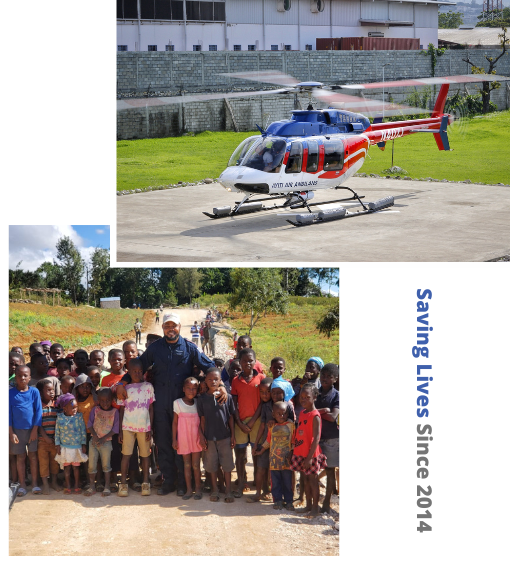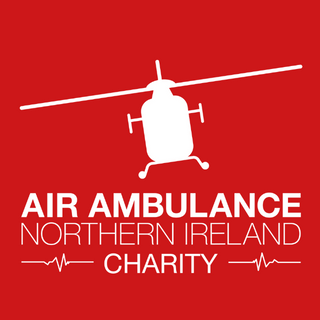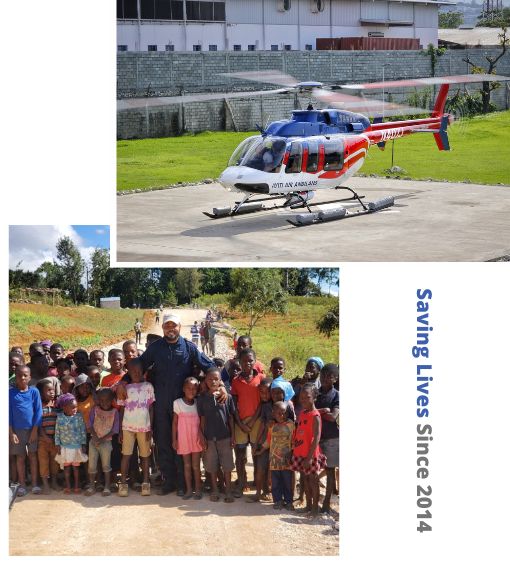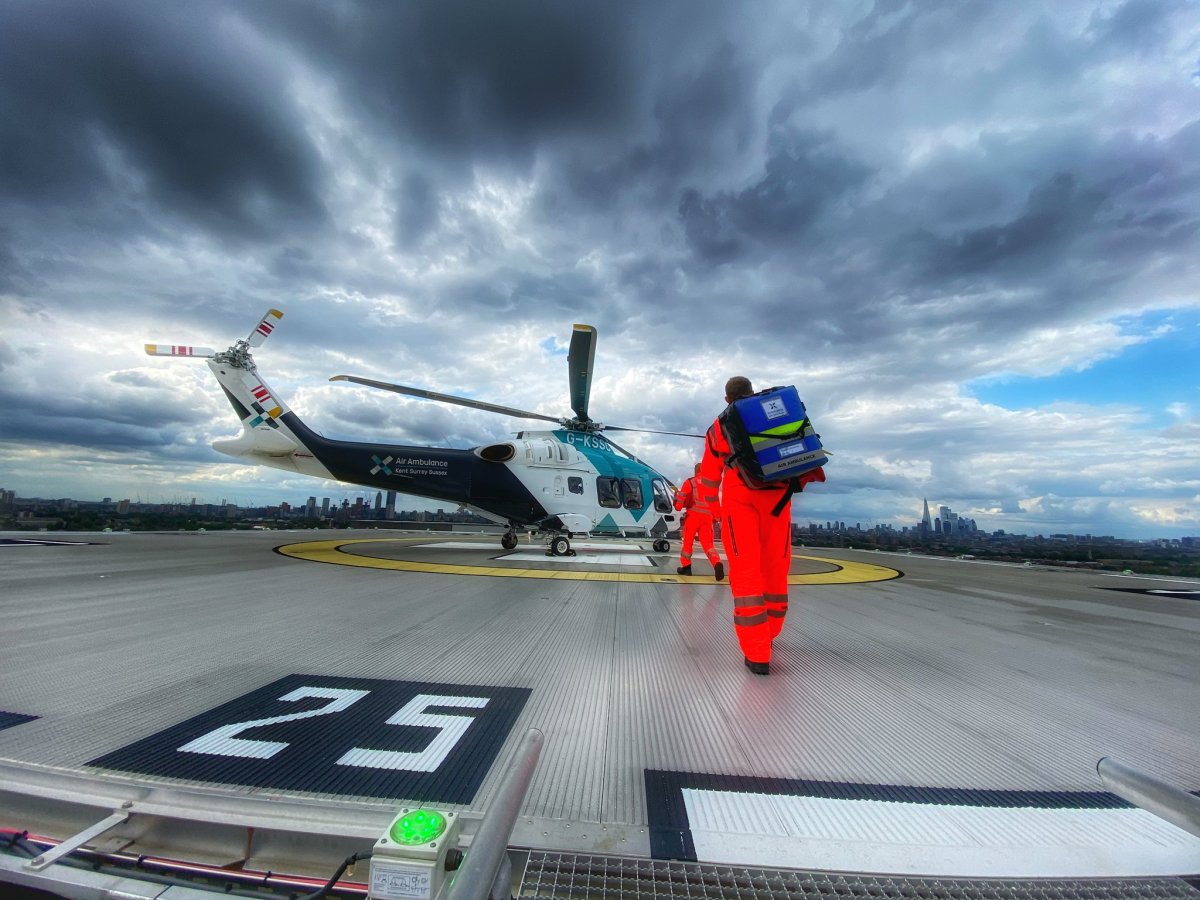So you’re looking for information on charitable and nonprofit air ambulance organizations? Well, you’re in the right place! Today, we’re going to dive into this topic and explore the world of organizations that provide air ambulance services without the aim of making a profit. These organizations play a crucial role in providing life-saving transportation for those in need, particularly in remote areas or during emergencies. So, if you’re curious to learn more about these incredible organizations and how they operate, keep on reading!

Charitable Air Ambulance Organizations
Charitable air ambulance organizations are non-profit entities that provide emergency medical transportation services to individuals in need. These organizations are driven by a mission to save lives and ensure that patients receive timely and specialized care during critical situations. Their primary objective is to offer air ambulance services to individuals who may not have the means to afford them otherwise.
Funding Sources
Charitable air ambulance organizations rely on a variety of funding sources to sustain their operations. These may include private donations from individuals and corporations, fundraising events, grants from foundations and government agencies, and partnerships with healthcare organizations. By diversifying their funding sources, these organizations are able to continue providing life-saving services to those in need.
Services Provided
Charitable air ambulance organizations offer critical care transportation to patients requiring urgent medical attention. This includes transporting patients from remote or inaccessible areas to medical facilities where they can receive the necessary treatment. These organizations typically use fully-equipped aircraft and have specialized medical teams on board to provide advanced life support during the transportation process. The services provided by these organizations help bridge the gap in healthcare accessibility and ensure that patients receive timely and appropriate care.
Eligibility Criteria
Charitable air ambulance organizations have specific eligibility criteria that determine who can access their services. These criteria may include factors such as medical necessity, financial need, and geographic location. The aim is to prioritize those individuals who are in the most critical condition and do not have the financial means to afford air ambulance transportation.
Examples of Charitable Air Ambulance Organizations
Some notable examples of charitable air ambulance organizations include Medevac Foundation International, Airlink, and Miracle Flights. These organizations have a strong track record of providing emergency medical transportation services to individuals in need, regardless of their ability to pay. Through their dedicated efforts, these organizations have saved countless lives and improved healthcare accessibility for those who require urgent medical intervention.
Nonprofit Air Ambulance Organizations
Nonprofit air ambulance organizations, similar to their charitable counterparts, are dedicated to providing emergency medical transportation services. These organizations operate under a nonprofit structure, meaning that any revenue generated is reinvested into their operations to further support their mission.
Definition and Purpose
Nonprofit air ambulance organizations are established with the primary purpose of delivering emergency medical transportation services to individuals in need. They operate on a not-for-profit basis, focusing on saving lives rather than generating profits. The purpose of these organizations is to ensure that patients requiring urgent medical attention are transported safely and efficiently to the appropriate healthcare facilities.
Sources of Revenue
Nonprofit air ambulance organizations rely on various sources of revenue to sustain their operations. These may include patient fees, insurance reimbursements, donations from individuals and corporations, government grants, and partnerships with healthcare providers. By diversifying their revenue streams, these organizations can continue operating and provide their critical services without charging exorbitant fees to patients.
Types of Services Offered
Nonprofit air ambulance organizations offer a range of services to meet the diverse needs of patients requiring emergency medical transportation. These services may include inter-hospital transfers, repatriations, organ transports, and emergency rescue missions. The goal is to ensure that patients receive the necessary care in a timely and efficient manner, regardless of their location or financial situation.
Qualification and Eligibility
To access the services of nonprofit air ambulance organizations, patients typically need to meet certain qualification and eligibility criteria. These criteria may include medical necessity, financial need, and geographic location. Nonprofit organizations prioritize individuals who require urgent medical intervention and do not have the financial means to afford traditional means of transportation.
Prominent Nonprofit Air Ambulance Organizations
Some notable nonprofit air ambulance organizations include Air Methods Corporation, REVA Air Ambulance, and Global Air Rescue. These organizations have a solid reputation in the industry, providing high-quality emergency medical transportation services to patients in need. Through their dedicated efforts, they have contributed significantly to improving healthcare accessibility and saving lives.

Financial Assistance Programs
Financial assistance programs play a crucial role in ensuring that individuals who require air ambulance services can access them without facing financial hardship. These programs provide financial support to eligible individuals, helping to reduce the financial burden associated with emergency medical transportation.
Overview
Financial assistance programs are designed to assist individuals who are in need of air ambulance services but do not have the means to cover the costs. These programs may be offered by charitable organizations, nonprofit entities, government agencies, or through partnerships with healthcare providers. The objective is to ensure that financial limitations do not prevent individuals from receiving the necessary emergency medical transportation.
Eligibility Criteria
Each financial assistance program has its own set of eligibility criteria to determine who is eligible for support. These criteria may include factors such as income level, medical necessity, and geographic location. The aim is to identify individuals who are in the greatest need and provide them with the necessary financial assistance.
Application Process
To apply for financial assistance, individuals typically need to complete an application form and provide supporting documentation. This may include proof of income, medical records, and a statement of need. The application process may vary depending on the organization or program, but typically involves submitting the required documents and waiting for a decision on eligibility.
Funding Options
Financial assistance programs are funded through a variety of sources, including government grants, private donations, and partnerships with healthcare organizations. These funding options help cover the costs associated with providing financial assistance to eligible individuals, ensuring that no one is denied access to emergency medical transportation due to financial constraints.
Examples of Financial Assistance Programs
Some examples of financial assistance programs include Angel Flight, Assistance in Healthcare, and the Air Care Alliance. These programs provide financial support to individuals who require air ambulance services but cannot afford them. Through their efforts, they help alleviate the financial burden associated with emergency medical transportation and ensure that individuals receive the care they need.
How Charitable and Nonprofit Organizations Work Together
Charitable and nonprofit air ambulance organizations often work together to maximize their impact and provide the best possible care to patients in need. Collaboration between these two types of organizations helps create a more efficient and effective system of emergency medical transportation.
Collaboration for Emergency Cases
In emergency situations, charitable and nonprofit air ambulance organizations collaborate to ensure that patients receive the necessary care as quickly as possible. When time is of the essence, these organizations work together to coordinate resources and provide seamless transportation services. This collaboration helps save lives and ensures that patients receive the appropriate care in a timely manner.
Complementary Roles and Responsibilities
Charitable and nonprofit organizations often have complementary roles and responsibilities within the healthcare system. While charitable organizations may focus on providing emergency medical transportation to individuals who cannot afford it, nonprofit organizations often work alongside healthcare providers to offer comprehensive medical services and support. By working together, these organizations bridge the gaps in healthcare accessibility and create a more holistic approach to patient care.
Mutual Support and Coordination
Charitable and nonprofit air ambulance organizations provide mutual support and coordination to ensure the smooth operation of emergency medical transportation services. This includes sharing resources, coordinating flights, and collaborating on patient transfers. By working together, these organizations optimize their capabilities and reach a larger number of individuals in need.
Case Studies
Real-life case studies demonstrate the power of collaboration between charitable and nonprofit organizations in emergency medical transportation. For example, a nonprofit air ambulance organization may partner with a charitable organization to transport a critically ill patient from a remote area to a specialized medical facility. Through their combined efforts, these organizations ensure that the patient receives the necessary care and support during their journey.

Impact of Charitable and Nonprofit Air Ambulance Organizations
Charitable and nonprofit air ambulance organizations have a significant impact on healthcare accessibility and patient outcomes. Their services help address the challenges faced by individuals requiring emergency medical transportation and contribute to improved health outcomes.
Accessibility in Remote Areas
Charitable and nonprofit air ambulance organizations play a crucial role in providing healthcare accessibility to individuals in remote areas. These organizations have the ability to reach locations that are inaccessible by traditional means of transportation, ensuring that individuals in remote and underserved communities receive the care they need in emergency situations.
Reduced Financial Burden
By providing financial assistance and offering services based on need rather than the ability to pay, charitable and nonprofit air ambulance organizations reduce the financial burden on individuals requiring emergency medical transportation. This ensures that individuals can access the necessary care without facing significant financial hardship, allowing them to focus on their health and recovery.
Improved Health Outcomes
The timely and specialized care provided by charitable and nonprofit air ambulance organizations significantly contributes to improved health outcomes for patients. By expediting transportation to medical facilities, these organizations ensure that patients receive the necessary care in a timely manner, improving their chances of survival and long-term recovery.
Case Studies
Case studies illustrate the impact of charitable and nonprofit air ambulance organizations on individuals’ lives. For example, a patient in a remote area who requires urgent medical attention may be transported by a charitable air ambulance organization to a specialized medical facility. This timely transportation can make a significant difference in the patient’s outcome, increasing their chances of survival and recovery.
Challenges Faced by Charitable and Nonprofit Air Ambulance Organizations
Charitable and nonprofit air ambulance organizations face various challenges in delivering their services, ranging from limited resources to regulatory compliance. Overcoming these challenges is crucial to ensuring their sustainability and continued ability to provide emergency medical transportation.
Limited Resources
One of the significant challenges faced by charitable and nonprofit air ambulance organizations is limited resources. These organizations often rely on donations and grants, which may vary in amount and frequency. Limited resources can hinder their ability to expand services, acquire new equipment, and reach more individuals in need. Finding innovative ways to secure funding and garner community support is essential for overcoming this challenge.
Sustainability
Sustainability is a critical concern for charitable and nonprofit air ambulance organizations. While their mission is to provide emergency medical transportation services, the organizations themselves need to operate efficiently and sustainably. This requires careful financial management, strategic planning, and a focus on long-term sustainability to ensure that they can continue serving the community effectively.
Regulatory Compliance
Charitable and nonprofit air ambulance organizations must comply with regulatory requirements to ensure the safety and quality of their services. These regulations may vary by jurisdiction and can pose challenges in terms of operational compliance and administrative burden. Staying up-to-date with regulatory changes and maintaining compliance is essential for these organizations to continue operating legally and effectively.
Operational Complexities
Operating air ambulance services involves various logistical challenges and complexities. From coordinating flights and medical teams to managing patient transfers and maintaining aircraft, charitable and nonprofit organizations must navigate a complex operational landscape. Ensuring smooth operations and maintaining a high level of service requires robust systems, well-trained staff, and effective communication.

Governance and Accountability
Charitable and nonprofit air ambulance organizations are held to high standards of governance and accountability to ensure transparency and effective stewardship of resources.
Transparency and Financial Reporting
Transparency and financial reporting are key aspects of governance for charitable and nonprofit organizations. These organizations are expected to provide public access to their financial statements, demonstrating how funds are raised, allocated, and used. Regular financial reporting ensures transparency and builds trust with donors, stakeholders, and the public.
Board of Directors and Governance Structure
Charitable and nonprofit air ambulance organizations often have a board of directors responsible for strategic decision-making and governance oversight. The board is accountable for ensuring that the organization operates within legal and ethical boundaries, and that resources are utilized effectively to further the organization’s mission. The governance structure provides a framework for responsible and sustainable management.
Regulatory Oversight and Compliance
Regulatory oversight is another aspect of governance for charitable and nonprofit air ambulance organizations. These organizations must adhere to regulations and standards set by relevant authorities to ensure the safety and quality of their services. Engaging with regulatory bodies, participating in industry audits, and maintaining compliance are all critical aspects of effective governance.
Measures for Accountability
Accountability is crucial for charitable and nonprofit air ambulance organizations, as they are responsible for managing resources, providing high-quality services, and meeting the needs of their stakeholders. Measures for accountability may include regular audits, performance evaluations, and strong internal controls. By implementing these measures, organizations can ensure that they are accountable to their donors, beneficiaries, and the community they serve.
Global Perspectives on Charitable and Nonprofit Air Ambulance Organizations
Charitable and nonprofit air ambulance organizations operate not only within national boundaries but also on a global scale. Understanding global perspectives on these organizations provides valuable insights into the challenges they face and the potential for collaboration and knowledge sharing.
International Examples
Many countries have established charitable and nonprofit air ambulance organizations to address the need for emergency medical transportation. These organizations often collaborate and share resources to serve individuals across borders. Examples include the Royal Flying Doctor Service in Australia, Air Ambulance Kent Surrey Sussex in the United Kingdom, and Médecins Sans Frontières (Doctors Without Borders) globally.
Collaborative Networks
The global nature of emergency medical transportation has necessitated the formation of collaborative networks among charitable and nonprofit air ambulance organizations. These networks enable organizations to share best practices, pool resources, and provide mutual support during times of crisis. Collaborative networks enhance the capacity of individual organizations and contribute to more efficient and effective emergency medical transportation on a global scale.
Policy and Regulation
Policy and regulation have a significant impact on the operations of charitable and nonprofit air ambulance organizations. Countries and regions have varying regulations regarding licenses, certifications, and qualifications required for service providers. The development of harmonized policies and regulations can facilitate the smooth operation of these organizations and improve healthcare accessibility across borders.
Lessons Learned
Global perspectives on charitable and nonprofit air ambulance organizations offer valuable insights and lessons learned. By studying successful models and best practices from around the world, organizations can learn from each other and adapt strategies to their own contexts. This knowledge sharing contributes to the continual improvement and advancement of emergency medical transportation services.

How to Support Charitable and Nonprofit Air Ambulance Organizations
Supporting charitable and nonprofit air ambulance organizations is crucial for their sustainability and ability to provide life-saving services. There are various ways individuals, businesses, and communities can contribute to the important work of these organizations.
Volunteering Opportunities
Volunteering is a valuable way to support charitable and nonprofit air ambulance organizations. Individuals with medical or aviation expertise can offer their skills and services to assist these organizations in their mission. Additionally, individuals with administrative, fundraising, or communication skills can contribute their time and expertise to support the operations of these organizations.
Donations and Fundraising
Donations and fundraising efforts help provide the necessary financial support for charitable and nonprofit air ambulance organizations. Individuals and businesses can make monetary donations to these organizations to help cover the costs of operations, equipment, and patient care. Fundraising events, such as charity runs, auctions, and galas, can also raise funds and increase awareness about the importance of emergency medical transportation services.
Awareness and Advocacy
Raising awareness about the work of charitable and nonprofit air ambulance organizations is vital for garnering support and promoting their mission. Individuals can help by sharing information about these organizations with their networks, advocating for policy changes to support their work, and participating in awareness campaigns. By increasing public understanding and support, individuals can contribute to the overall success of these organizations.
Corporate Partnerships
Businesses can play a significant role in supporting charitable and nonprofit air ambulance organizations through corporate partnerships. Companies can donate funds, sponsor events, or offer in-kind contributions to support these organizations’ operations. Corporate partnerships not only provide financial support but also help raise awareness about the organizations’ work within the business community.
Conclusion
Charitable and nonprofit air ambulance organizations are dedicated to providing critical emergency medical transportation services to individuals in need. Through their collaborative efforts, these organizations overcome challenges, ensure healthcare accessibility, and save lives. Their impact extends beyond borders, and their work is supported by the generosity of individuals, businesses, and communities. By understanding and supporting these organizations, we can contribute to the provision of effective and timely emergency medical transportation for those who need it most.



